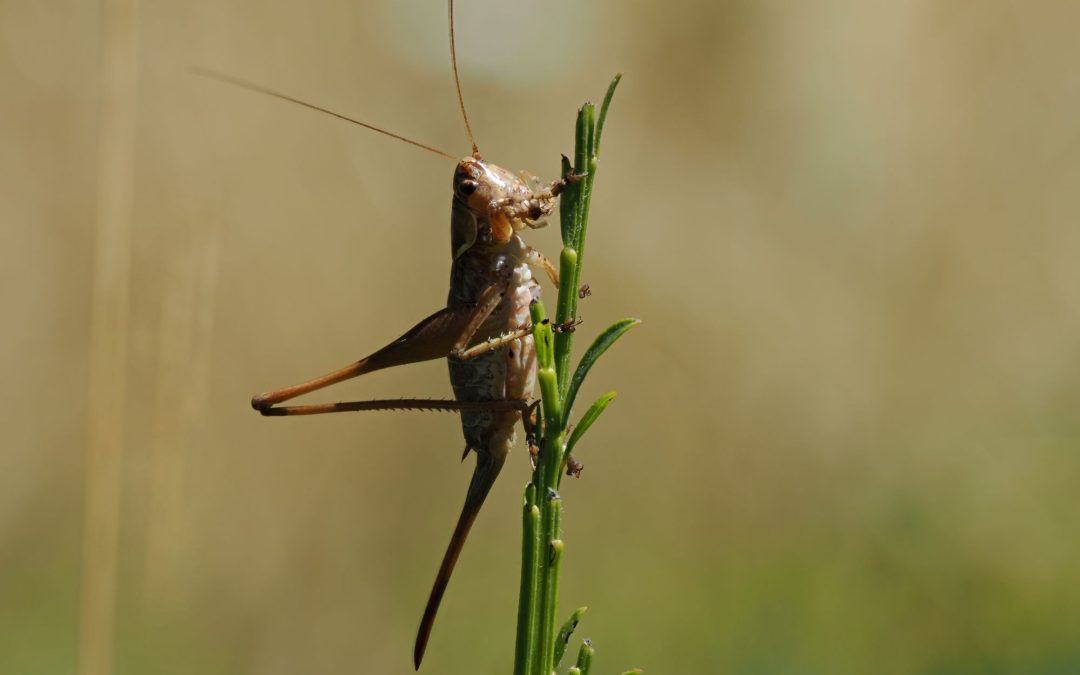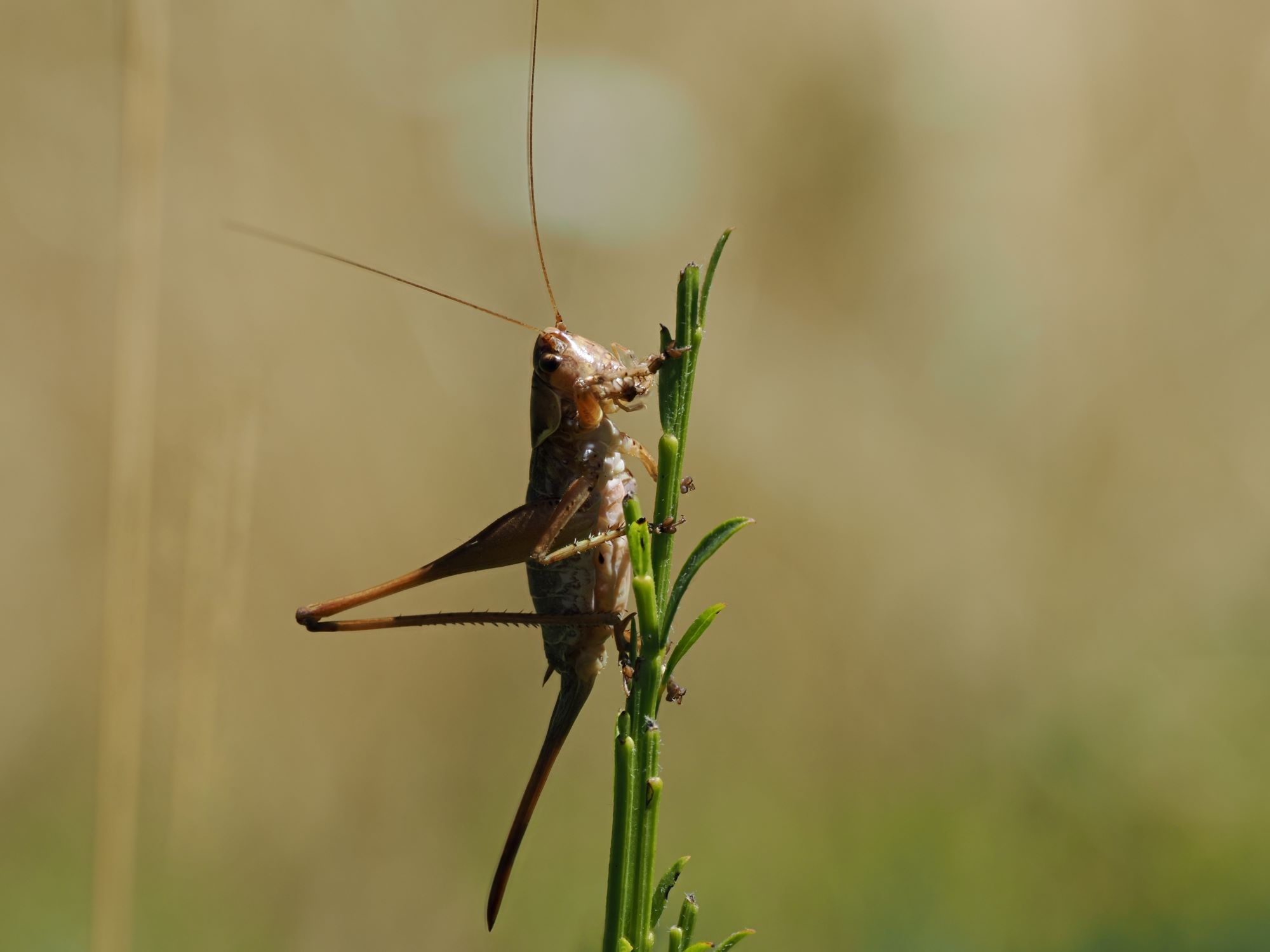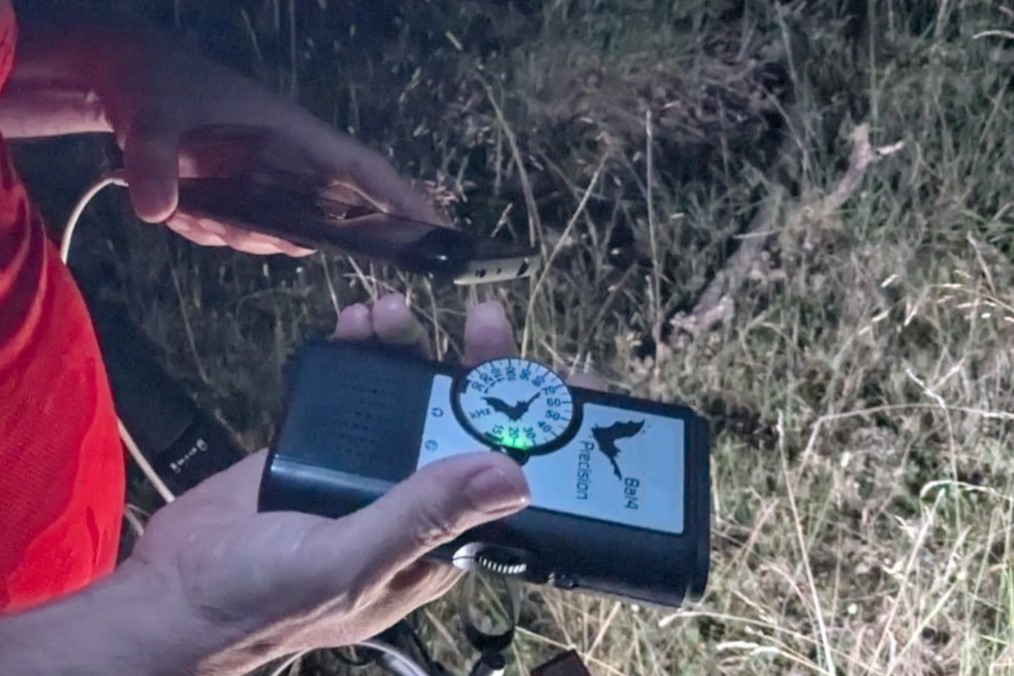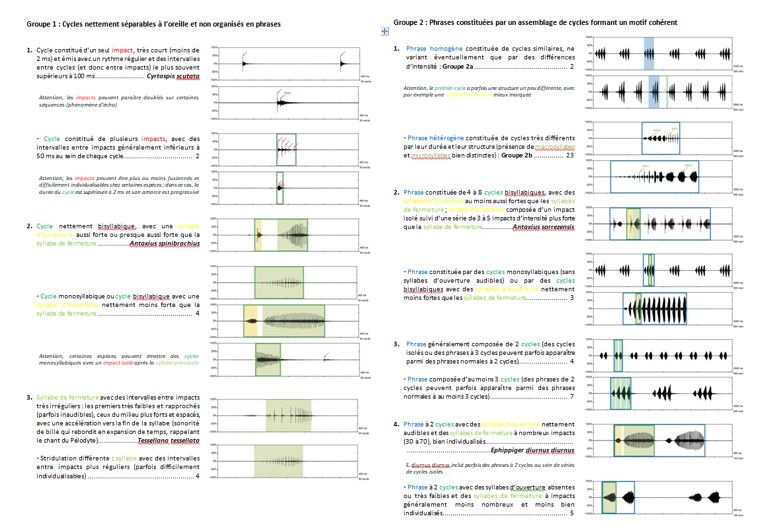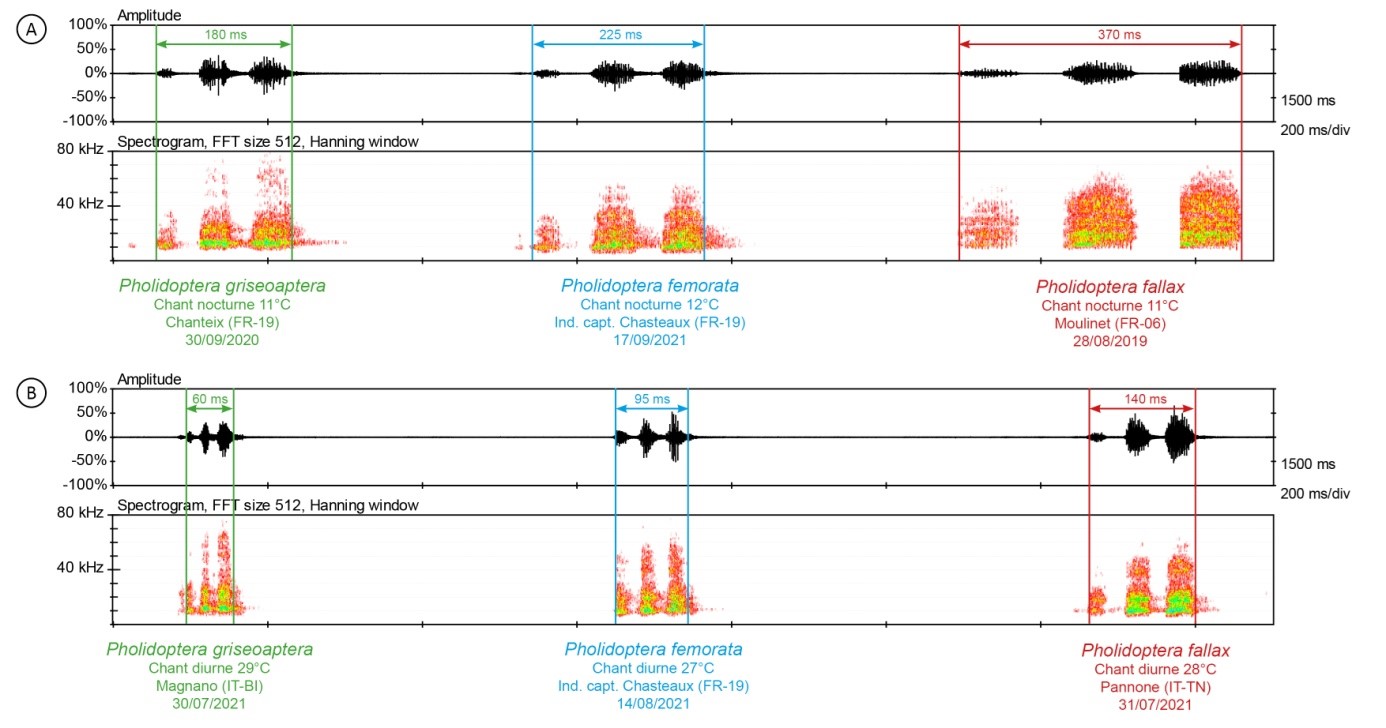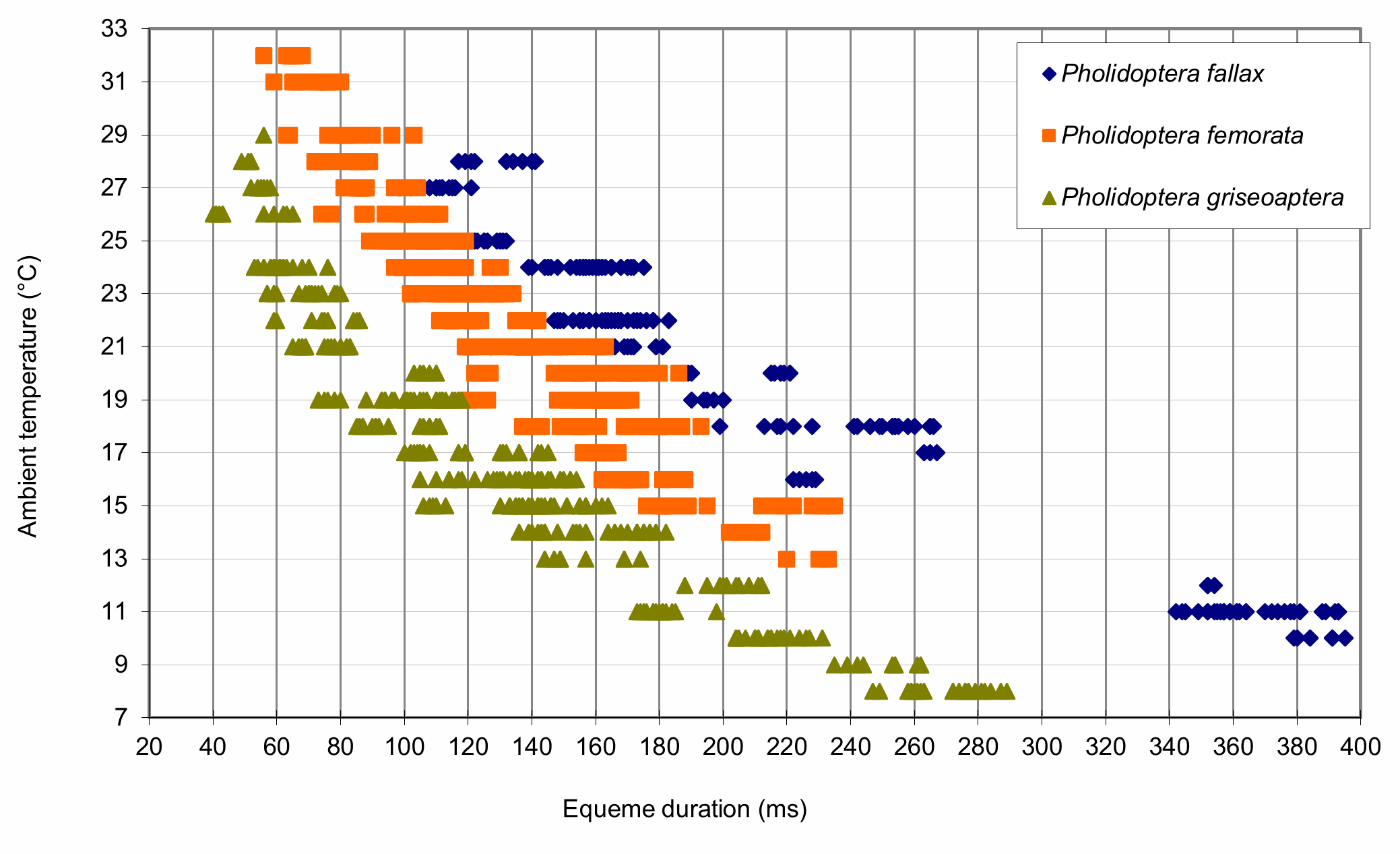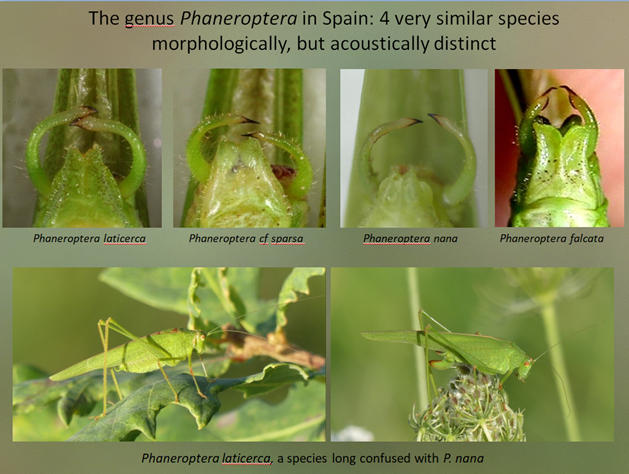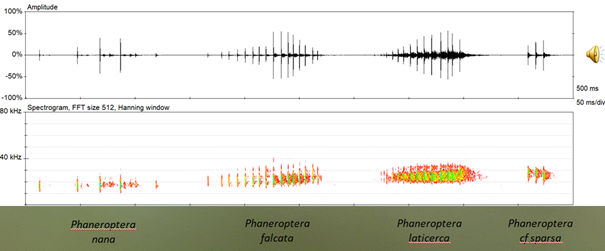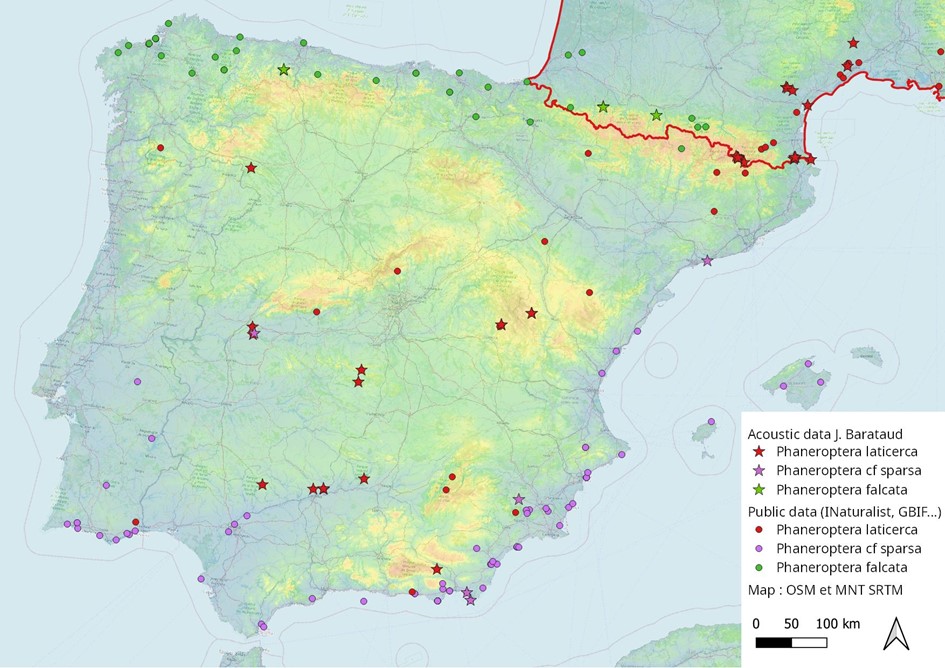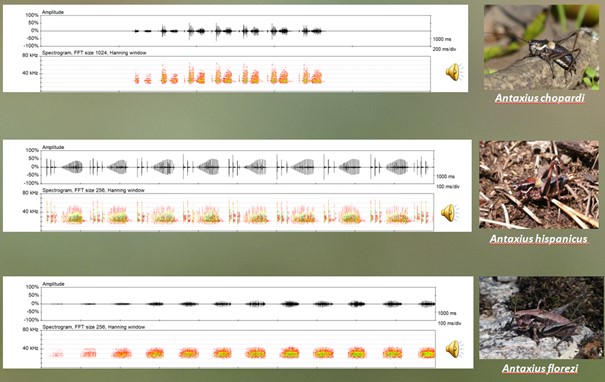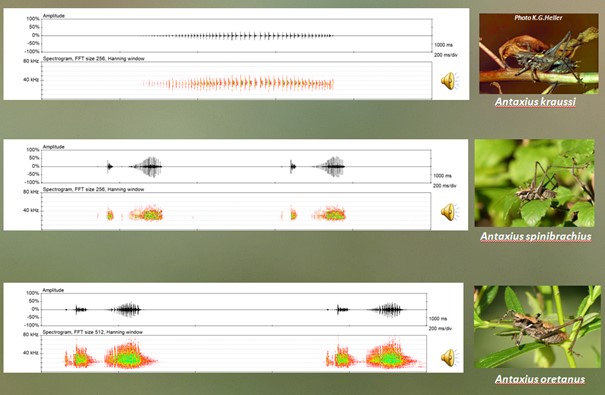Despite representing two third of the European Orthoptera biodiversity, bush crickets (Ensifera: Tettigoniidea) remain often difficult to observe and study in the field. In this article, I will share some personal experiences and highlight potential for future research.
Bush crickets are very distinctive insects. Unlike grasshoppers, which are mainly diurnal, prefer herbaceous vegetation and sing in the audible range, for Tettigoniidea:
– Most species are nocturnal and difficult to detect during the day.
– Many prefer shrubby or woody vegetation and are more difficult to observe in habitats that are difficult to access.
– Most of their songs are high-frequency, at least partly in the ultrasonic range, and are therefore barely or not at all audible to the human ear.
For all these reasons, the use of an ultrasound detector becomes quickly essential when you want to study this group of Orthoptera.
Over the years, I made several thousand recordings of all the species present in the French fauna and many of the Iberian species, both in the field and in captivity, with different temperature conditions for the greatest number of individuals and different localities.
Identification key based on sounds
Thanks to this large library, I was able to measure standard bioaccoustic variables in a systematic way (the dominant frequency, number of syllables, echemes, etc., the duration of syllables, echemes, etc.) and build up a database with each species I could study. Then, I started to search for discriminating criteria between the various species and construct an acoustic identification key and a determination guide to be published in 2025.
The importance of temperature
The differentiation of certain species requires precise measurements, sometimes linked to temperature conditions. This is the case, for example, with the different species of the genus Pholidoptera, where measuring the duration of echemes as a function of temperature enables us to differentiate between 3 acoustically very similar species.
The discovery of species new to science
Acoustic research using an ultrasound detector can also reveal cryptic species that are morphologically very similar. This was the case, for example, for Phaneroptera laticerca, a species widely distributed in the Iberian Peninsula and southern France, but long confused with Phaneroptera nana, which is morphologically very similar. Acoustically, however, the 4 species present in Spain are quite distinct, and each has its own particular characteristics. Their morphological identification in the field remains complicated and is mainly based on the shape of the male cerci, but the progress of acoustic surveys using an ultrasound detector is gradually making it possible to refine our knowledge of their ecology and distribution.
Caractérisation acoustique des différentes espèces du genre Phaneroptera Audinet-Serville, 1831 en Europe occidentale, et description d’une nouvelle espèce cryptique en France et en Espagne (Orthoptera, Tettigoniidae, Phaneropterinae). Zoosystema 43 (29): 691-727. 2021.
Improved detection of shy species
The same work is being carried out on other groups of little-known Iberian species, such as the genera Antaxius and Pterolepis, which are difficult to detect visually and for which acoustic studies seem to provide interesting criteria for gaining a better understanding of their systematics, biology, ecology and evolution.

